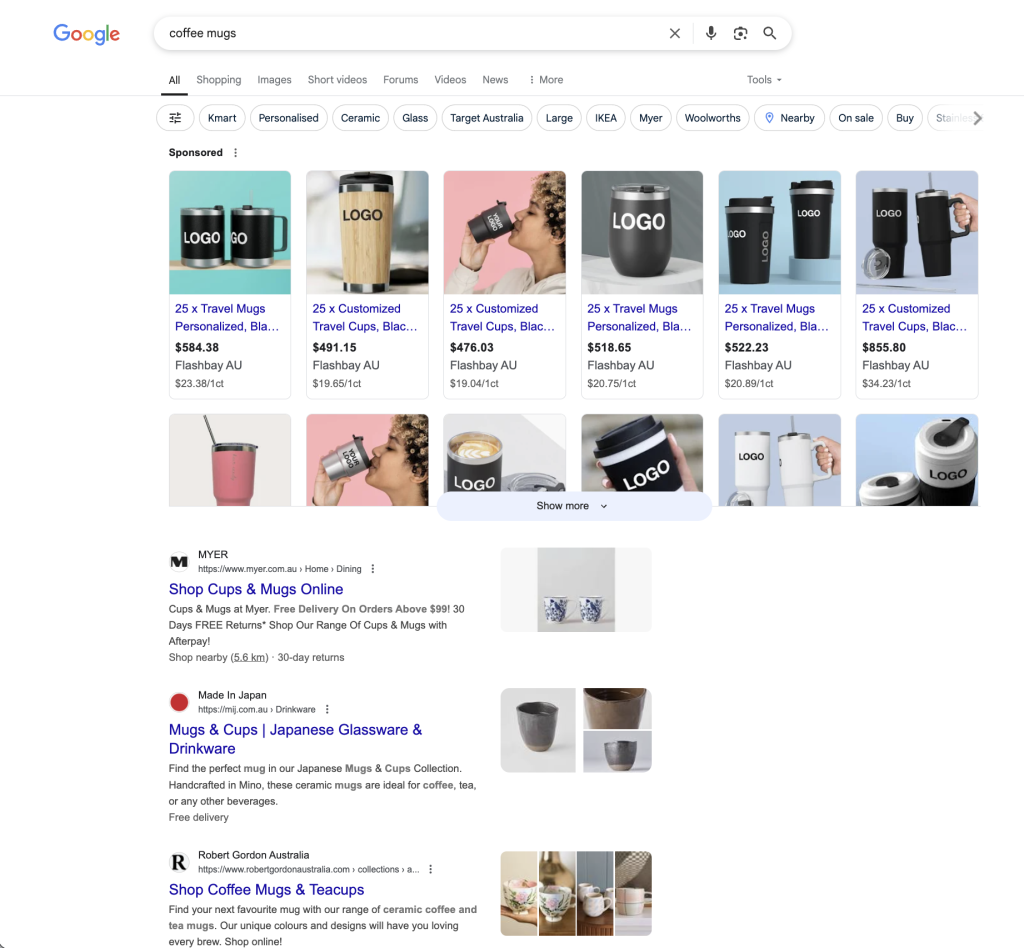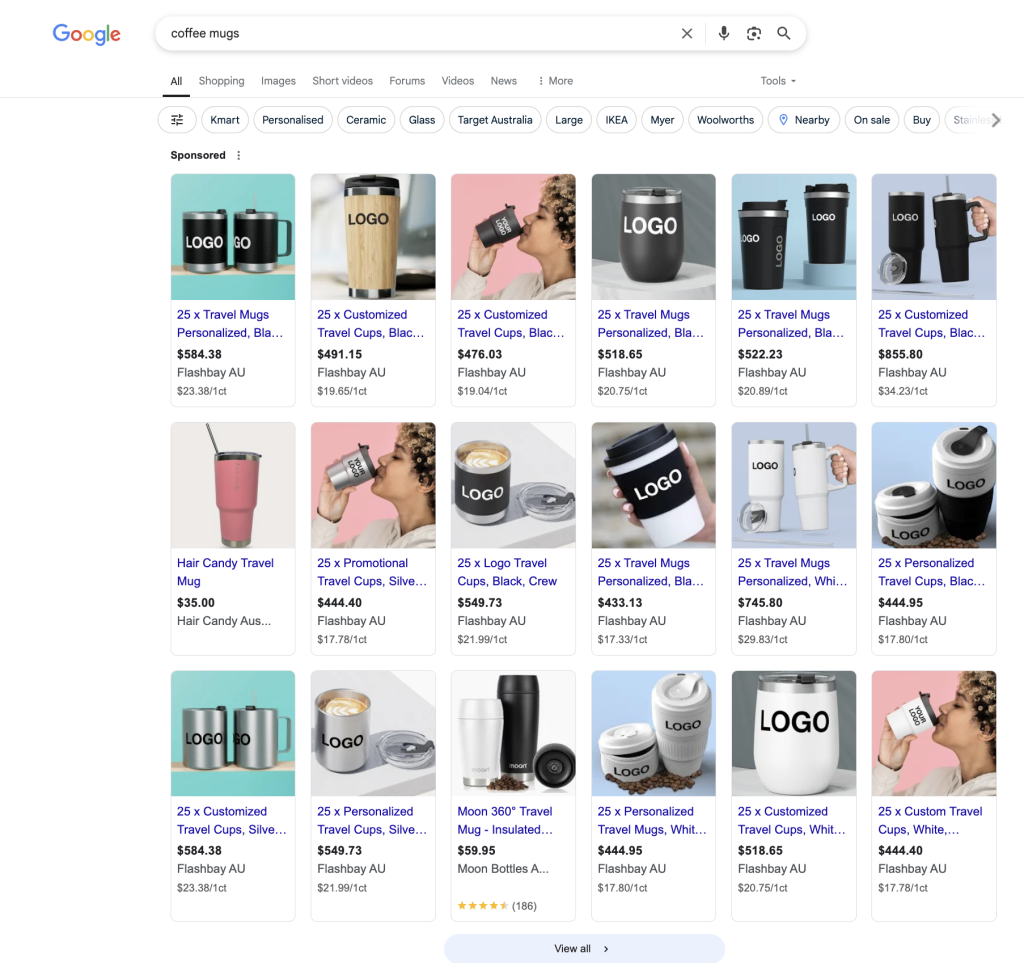
Google’s Search Engine Results Pages (SERPs) are undergoing a transformation that is reshaping the online landscape for anyone selling products. In 2025, the familiar “ten blue links” will no longer be the main event, especially for product-related searches. Instead, Google is rolling out visually rich, AI-driven, and highly interactive product displays that push traditional organic results further down the page. If you’re an e-commerce merchant, understanding these changes and how to adapt is now essential for survival and growth.
The New Face of Google Product Search
A Shift from Links to Visual Shopping Experiences
Over the past several months, Google has been testing and rolling out new product-focused features on its desktop search results. The most notable of these is a section that appears below the traditional Shopping ads. At first glance, it looks like an image gallery, similar to an image pack you’d see for generic image queries. Only when you expand this section does it become clear that these are additional Shopping ads, not organic results.
Before and After: A Visual Overhaul
Before: Shopping ads appeared in a horizontal carousel at the top, clearly labeled as “Sponsored.”

After: A new, expandable image grid appears below the carousel; this grid is more immersive and visually driven, and the “ad” label only becomes visible upon interaction.

This change is not just cosmetic. It fundamentally alters how users interact with product search results, often blurring the line between paid and organic content. The visual-first approach means that your product images, not just your website links, are now the primary way your products are discovered.
Beyond Shopping Ads: Rich Product Features Dominate the SERP
Multiple Rows of Product Listings
Google’s product-related SERPs now feature multiple rows and sections dedicated to products. These include:
- Rich Product Carousels: Showcasing images, prices, shipping terms, and merchant names.
- “Popular Products” and “In Stores Nearby”: Highlighting trending items and local availability.
- AI-Generated Shopping Briefs: Summaries that include specs, review snippets, and buying advice—often personalized based on user history and location.
The result? Rich product sections now occupy the majority of the visible page, relegating traditional text-based organic results to a position “below the fold.” Users often experience a curated shopping experience before encountering a single blue link.
Where Does Google Get All This Product Data?
The Central Role of Google Merchant Center
All these new product features and enhanced listings are powered by data from Google Merchant Center (GMC). GMC was once just a tool for managing paid Shopping ads. Today, it is the backbone of both paid and organic product visibility on Google.
- Free Product Listings: Since late 2024, Google has expanded free product listings. Merchants who upload their product data to GMC can now appear in these rich sections, even if they don’t pay for ads.
- Enhanced Data Requirements: Google has raised the bar for product data quality. Attributes like price, availability, shipping, images, and even energy efficiency are now required or strongly recommended.
- Content Syndication: Google Merchant Center can now extract marketing content from your emails and social media to enhance your listings, broadening your reach across Google properties.
Key Takeaway: If your products aren’t in Google Merchant Center, they are unlikely to appear in these new, highly visible product sections. Relying on Google to crawl and index your product pages is no longer enough to stay competitive.
What This Means for E-commerce Merchants
A New Competitive Reality
- Visibility is tied to Google Merchant Center: Your products’ chances of being seen, whether in paid ads or organic product carousels, now depend on the quality and completeness of your GMC feed.
- Organic Impressions at Risk: Merchants not leveraging GMC are already seeing declines in organic impressions and clicks as their products are pushed further down (or off) the page by rich product features.
- Big and Small Merchants Alike: Whether you’re a large retailer or a small business, you must have a robust GMC presence to compete for visibility.
The New Checklist for Product Visibility:
To maximize your presence in Google’s product SERPs, you must:
- Set Up and Optimize Your Google Merchant Center Account: Even if you don’t run paid ads, your product catalog should be fully uploaded and up-to-date in GMC.
- Meet Enhanced Data Requirements: Ensure your product feed includes all required attributes, ID, title, price, availability, images, GTIN/MPN, shipping, tax, and more.
- Use Structured Data on Product Pages: Implement schema markup (Product, Offer, Review) to help Google understand and display your products in rich results.
- Create Unique, High-Quality Content: Avoid generic manufacturer descriptions. Write unique copy, add FAQs, and include customer reviews to stand out.
- Optimize Images and Videos: High-quality, descriptive images are now essential, as they are often the first thing users see.
- Monitor and Adapt: Use GMC’s analytics to track performance and make data-driven improvements.
Why Is Google Making These Changes?
The Strategic Shift: Competing with Marketplaces
Google’s move toward richer, more immersive product SERPs is not just about user experience. It’s a strategic play to capture a larger share of the e-commerce market, a territory long dominated by Amazon, Walmart, Target, and eBay. By keeping users engaged within the Google ecosystem and providing all the information they need to make a purchase decision, Google increases the likelihood that transactions (and ad revenue) stay within its platform.
AI and Personalization: The Future of Shopping
Google’s 2025 updates are powered by AI, enabling:
- Hyper-Personalized Recommendations: Results are tailored to individual users based on browsing history, location, and even mood indicators.
- Conversational and Visual Search: Users can search by voice or image, and Google will surface relevant products instantly.
- Real-Time Inventory and Local Availability: Retailers can sync stock data, allowing users to see only in-stock items, including those available nearby.
The Risks of Ignoring Google Merchant Center
Falling Behind in Organic and Paid Search
Merchants who do not adapt to this new reality risk:
- Losing Organic Traffic: As product carousels and AI-generated shopping briefs dominate the SERP, traditional organic links become less visible and less clickable.
- Missing Out on Free Listings: Free product listings are now a significant source of impressions and clicks, but only for those who participate in the Google Merchant Center (GMC).
- Reduced Brand Presence: Without rich product data, your brand may be overshadowed by competitors who have optimized their Google Merchant Center (GMC) feeds.
How to Get Started (or Catch Up)
Step-by-Step Action Plan for Merchants
- Create or Update Your Google Merchant Center Account: Go to merchants.google.com, sign up, and verify your website.
- Upload Your Full Product Catalog: Use manual entry, Google Sheets, scheduled fetch, file upload, or Content API for automation.
- Meet All Data Requirements: Ensure every product has complete, accurate, and up-to-date information.
- Enable Free Product Listings: This is now the default, but double-check your settings in GMC.
- Optimize for Enhanced Listings: Add detailed descriptions, multiple images, customer reviews, and structured data markup.
- Monitor Performance: Use GMC’s analytics to track impressions, clicks, and conversions. Adjust your feed and content based on what works.
- Stay Informed: Google is updating GMC and SERP features rapidly. Subscribe to official updates and industry blogs to stay ahead.
Looking Ahead: The Future of Product Search
E-commerce, AI, and the Rise of “Zero-Click” Shopping
Google’s direction is clear: the future of product discovery is visual, AI-driven, and increasingly contained within Google’s own interfaces. As AI-generated overviews and product briefs become the norm, users will make more decisions without ever leaving the search engine results page (SERP). For merchants, this means that feed optimization, data syndication, and structured content are no longer optional; they are the foundation of online visibility and sales.
AI Shopping and Product Data Syndication
Enriched product data, robust feeds, and seamless syndication will power not only Google’s search but also emerging AI shopping assistants and visual search tools. Merchants who invest in these areas now will be best positioned to thrive as the landscape continues to evolve.
Final Thoughts: Adapt or Be Left Behind
The changes to Google’s product search are not a passing trend—they represent a fundamental shift in how consumers find and buy products online. For e-commerce merchants, the message is urgent and clear:
“Getting your product detail pages crawled and indexed is not enough anymore to remain relevant and rank well on SERP. Now, all merchants must have their Google Merchant Center account up and running, even if they don’t run Google Ads campaigns. They must have their entire product catalog on GMC if they want to have a fair chance to see their products featured on SERP and compete for visibility.”
Those who embrace this new reality by optimizing their product data, leveraging Google Merchant Center, and staying agile will continue to grow. Those who do not will see their visibility, traffic, and sales steadily decline.
The time to act is now.
Want to Learn More?
If you’re ready to future-proof your e-commerce business, start with Google Merchant Center today. The search landscape has changed; ensure you adapt to it.
We know these updates can feel overwhelming, and the world of product search is evolving faster than ever. If you have questions about getting started with Google Merchant Center, optimizing your product feeds, or navigating these changes, we’re always here to help.
What challenges or questions do you have about Google’s latest product search features? Please share your thoughts, and reach out to us directly. We’re committed to keeping you informed and supporting your success as new developments unfold.
Stay connected for more insights and guidance as the e-commerce landscape continues to evolve.
